Mexico's diversity - a symbiosis of culture and religion
Mexico's culture and religion are strongly characterised by a unique mixture of indigenous traditions and Spanish influences. Culturally rich in art, music and folk festivals, the diversity is reflected in pre-Columbian roots and colonial influences. The family plays a central role in social life, and festivals such as Día de los Muertos reflect deep spiritual connections.
In religious terms, Mexico is predominantly Catholic, with the Virgin of Guadalupe as an important symbol. At the same time, there is a fascinating combination of Catholic and indigenous religious practices that enrich many traditions and rituals.
Mexico culture
A look at the historical culture and its heritage
Mexico's culture is a fascinating blend of indigenous and Spanish history that characterises the country in its art, music, architecture and everyday life. Before the arrival of the Spanish, impressive civilisations such as the Maya, Aztecs, Zapotecs and Olmecs flourished in Mexico. Their influences can still be felt in Mexican culture today, particularly in architecture, language (there are still many indigenous languages) and traditional festivals.
After Spanish colonisation in the 16th century, indigenous culture and European influences merged to form a new, unique cultural identity. This is particularly evident in religion, art and festivities. Festivals such as the Día de los Muertos (Day of the Dead) or the Posadas at Christmas combine indigenous rituals with Catholic traditions.

Mexico's art and music have also achieved global significance. From the revolutionary art of painters Frida Kahlo and Diego Rivera to traditional Mexican music such as mariachi, son or ranchera, Mexican culture radiates a deep passion and a strong awareness of its history.

Mexico is also famous for its culinary diversity, which has been declared an intangible cultural heritage by UNESCO. Mexican cuisine combines regional ingredients such as corn, beans and chillies with Spanish influences, resulting in dishes such as tacos, moles and tamales that are appreciated all over the world.
Mexico round trips - culture, nature, history

Mexico Día de Muertos
- World-famous Mexican festival of the dead
- Archaeological sites of Oaxaca
- Cartagena's historic old town
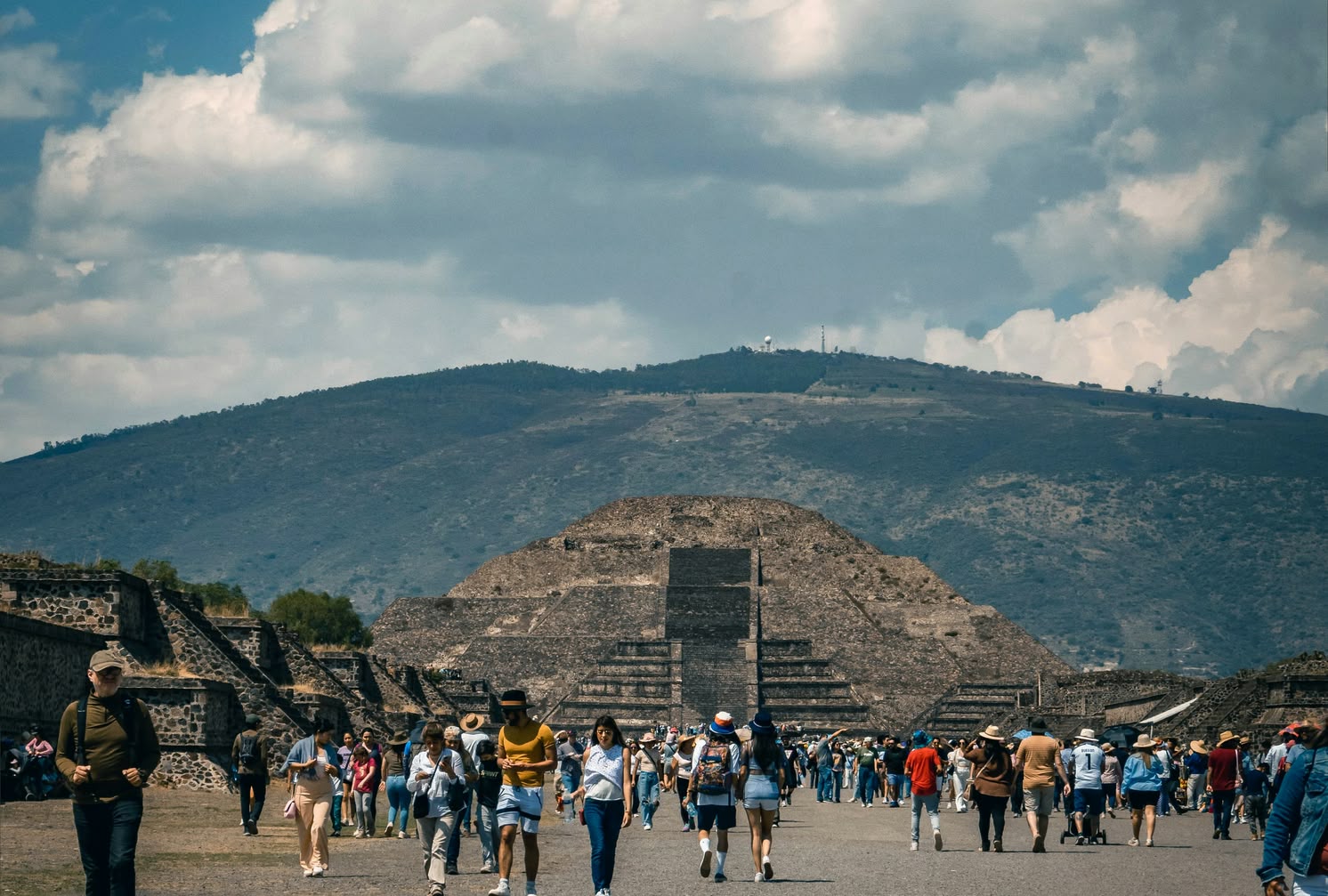
Mexiko Cities and the Sea
- Aztec ruins of Teotihuacán
- Magical villages of Puebla, Cholula and Atlixco
- Relax on the beaches of Playa del Carmen
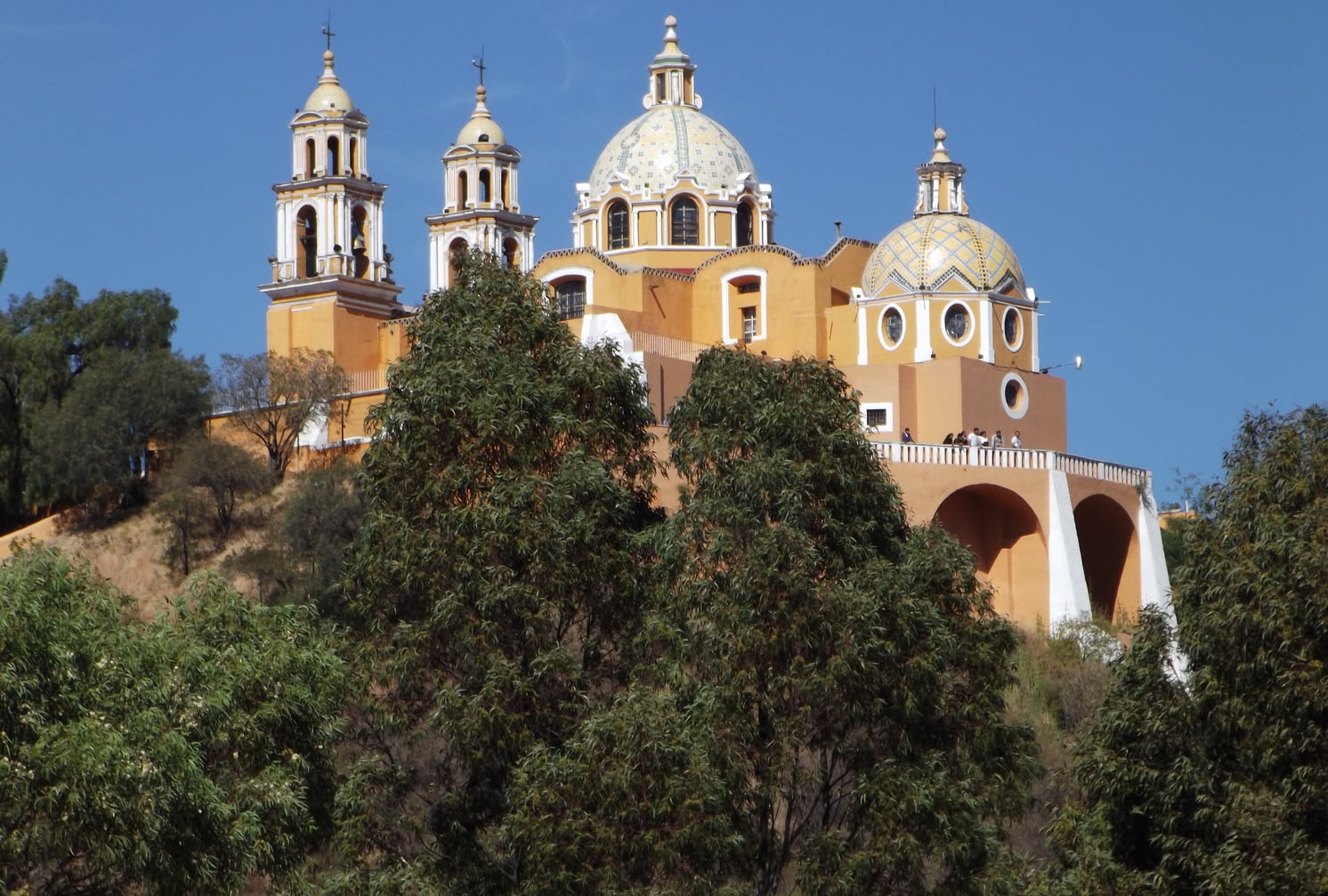
Traditional Mexico
- Hearty Mexican cuisine
- Ruins of Teotihuacán
- Magical villages of Cholula and Atlixco
Festivals and traditions - The cultural diversity of Mexican holidays
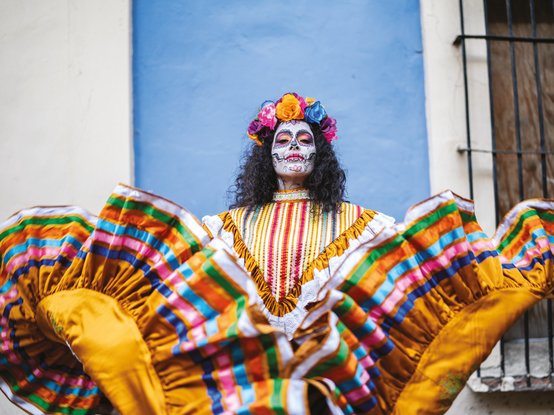
A well-known and culturally significant holiday in Mexico is Día de los Muertos (Day of the Dead), which is celebrated every year on 1 and 2 November. This holiday has its roots in the indigenous cultures of Mexico and combines pre-Columbian traditions with Catholic influences. It serves to commemorate the deceased and accept death as a natural part of life. Typical Mexican clothing includes colourful traditional costumes, which are often worn on special occasions and strengthen cultural identity.
Ofrendas (home altars) are erected to honour the deceased. These altars are decorated with photos of the deceased, flowers (especially marigolds), candles, sugar skulls and food. It is believed that the souls of the dead return to earth on these days to visit their family and take part in the celebrations. Families come together to celebrate these days by gathering in cemeteries and throwing a party full of colour and joy.
This holiday is a living example of the unique blend of religion and culture in Mexico. UNESCO has recognised Día de los Muertos as part of the Intangible Cultural Heritage of Humanity.
The majestic Mayan temples
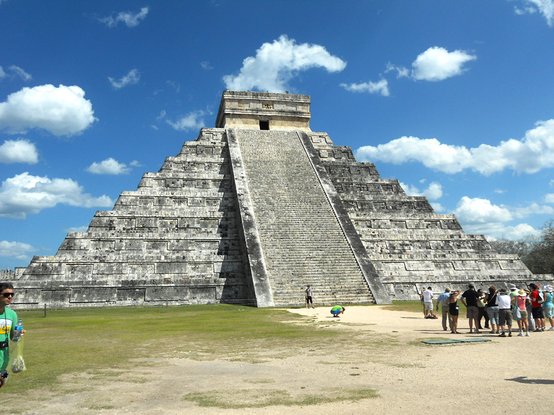
The Mayan temples are impressive relics of the highly developed Mayan civilisation that flourished between 250 and 900 AD. These temples, such as the famous ones in Tikal, Palenque and Chichen Itza, are architectural masterpieces and central religious sites that reflect the Maya's knowledge of astronomy, maths and art.
The temples are often part of larger urban centres and offer insights into the religion and daily life of the Maya. They are often decorated with ornate stelae and reliefs depicting gods and historical events. Particularly striking is the alignment of many temples, which correlates with astronomical events, emphasising their cultural significance.
Today, many of these temples are UNESCO World Heritage Sites and attract thousands of tourists every year who want to experience the rich history of the Maya.
Don't miss the chance to make your dream trip a reality! Contact our experienced travel consultants now and let them inspire and advise you for your trip. Take the first step towards your unforgettable adventure!
Mexico Religion
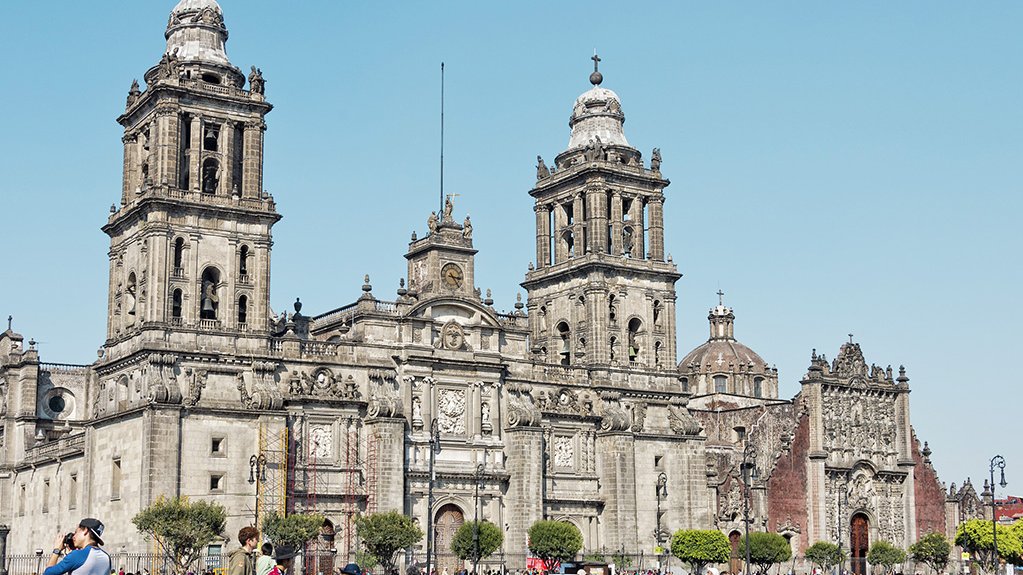
Religion in Mexico is deeply rooted in the country's history and culture. Around 80% of the Mexican population belong to the Roman Catholic faith, reflecting the country's strongly Catholic society. This dominance can be traced back to the Spanish colonial period, when missionaries brought Christianity to the country. A central symbol of Mexican Catholicism is the Virgin of Guadalupe, who is honoured as the patron saint of Mexico and plays an important role in the country's religious life.
In addition to Catholicism, there are also indigenous religious practices that are often fused with Catholic customs. These syncretic traditions are particularly evident in rural regions, where rituals and festivals combine both Christian and indigenous elements. Religious festivals such as Día de los Muertos (Day of the Dead) or the Semana Santa (Holy Week) celebrations are examples of this cultural mix. Everyday life in Mexico is characterised by a variety of traditions, social gatherings and a strong sense of community.
In addition to the Catholic majority, there are growing Protestant communities, as well as a small but significant number of followers of other religions, including Judaism, Islam and spiritual movements.
Overall, religion in Mexico is not just a matter of faith, but strongly characterises the country's social, cultural and even political life.
Frequently Asked Questions - Culture and Religion Mexico
There are hundreds of Mayan temples in Mexico, spread across various archaeological sites, representing the impressive Mayan civilisation. Some of the most famous are located in:
Chichen ItzaThis UNESCO World Heritage Site in Yucatán is famous for the El Castillo pyramid, which is considered a masterpiece of Mayan architecture.
PalenqueLocated in the state of Chiapas, Palenque offers well-preserved ruins, including the Temple of the Inscriptions, which is richly decorated and provides important historical information.
TikalAlthough Tikal is mainly located in Guatemala, it is also accessible to many visitors from Mexico. This huge city is famous for its tall pyramids and dense jungle.
UxmalAlso located in Yucatán, Uxmal is known for its monumental architecture, including the Pyramid of the Sorcerer.
These sites are not only archaeologically significant, but also culturally and historically important for Mexico and Central America.
Religion in Mexico is diverse, with around 80% of the population belonging to the Roman Catholic faith. This dominance is a consequence of Spanish colonisation in the 16th century. In addition to Catholicism, there are also a number of indigenous faiths, which are often combined with Catholic traditions, resulting in a syncretic faith. Other faiths can also be found in rural areas, including various Protestant communities as well as Jewish and Islamic communities. The Virgin of Guadalupe is a central symbol of Mexican Catholicism and plays an important role in religious life.
The culture in Mexico is a rich mixture of indigenous traditions and Spanish influences. It is reflected in art, music, dance and food. The best-known forms of cultural expression include
- Mexican musicGenres such as mariachi, ranchera and cumbia are an integral part of Mexican identity.
- FestivalsFestivities such as Día de los Muertos and the Independence Day celebrations on 16 September are deeply rooted in Mexican culture.
- ArtThe works of artists such as Frida Kahlo and Diego Rivera are internationally recognised and show the connection between personal and social expression.
- CuisineMexican cuisine, famous for its flavours and ingredients, is part of UNESCO's Intangible Cultural Heritage.
Mexican culture is dynamic and constantly evolving, preserving traditional elements and integrating new influences.
Mexico has a rich palette of traditions that are deeply rooted in its history and culture. Some of the most important traditions are:
Día de los Muertos (Day of the Dead): An important holiday on which Mexicans commemorate their deceased loved ones. Altars (ofrendas) are decorated with photos, food and flowers to honour the souls.
Las Posadas: This tradition takes place in the run-up to Christmas and symbolises Mary and Joseph's search for shelter. Communities organise processions to commemorate the journey to the birth of Jesus.
Quinceañera: A solemn ritual that marks a girl's 15th birthday. It is often associated with a large celebration that symbolises the transition from childhood to womanhood.
Fiestas Patrias: These celebrations on 16 September, Mexico's Independence Day, include parades, music and the singing of the national anthem.
The beauty of the landscape and the cultural diversity are key to what makes Mexico a popular travel destination.
Mexican cuisine is known for its variety and flavours. Typical dishes include:
- Tacos: tortillas filled with various ingredients such as meat, vegetables and salsa.
- Enchiladas: Tortillas filled with meat or cheese and served in a chilli sauce.
- Mole: A complex sauce that often contains chocolate, chillies and spices and is often served with poultry.
- Tamales: corn dough wraps filled with various fillings, wrapped in corn leaves and steamed.
Mexican cuisine is so diverse that it has been recognised by UNESCO as intangible cultural heritage.
Spanish is the predominant language in Mexico Population and languageMexico and is spoken by around 98% of the population as their mother tongue. It is the official language of the country and is used in education, the media and the government. Mexican Spanish has many regional dialects and expressions that distinguish it from the Spanish language of other countries.
In addition to Spanish, many indigenous languages are also spoken in Mexico, reflecting the country's cultural diversity. In total, there are over 68 indigenous languages, including Nahuatl, Mayan, Mixteco and Zapoteco. These languages often have several dialects and are particularly widespread in rural areas. The Mexican government recognises the importance of these languages and promotes their preservation and use.
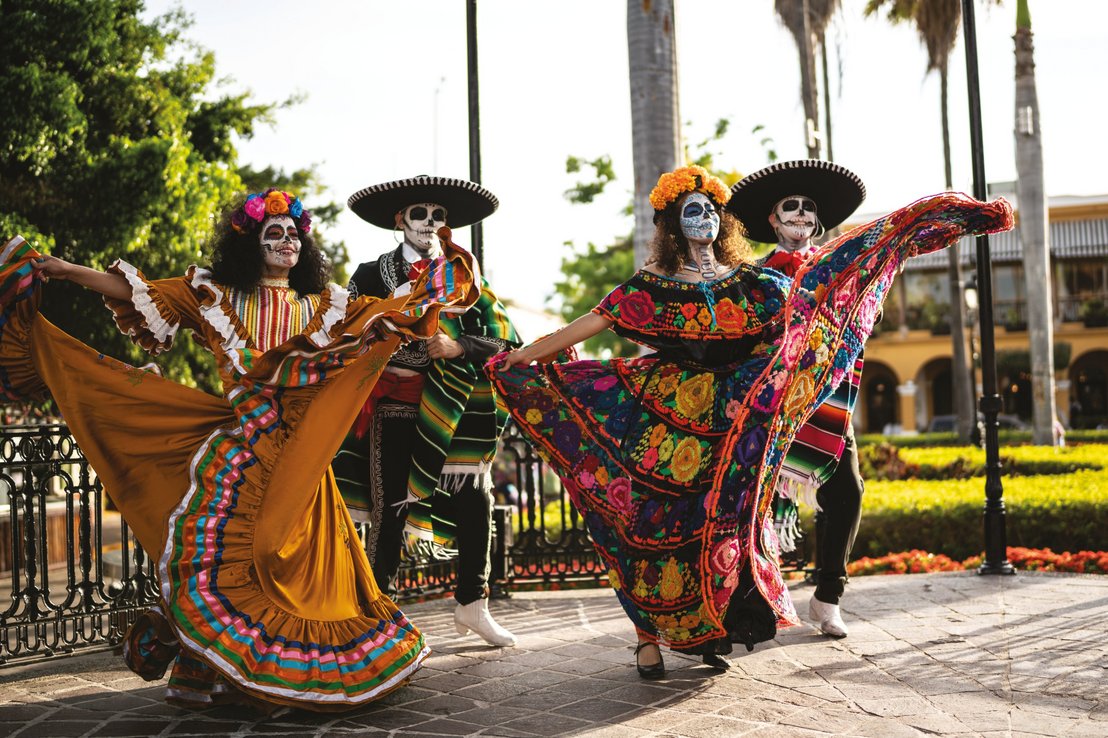
This might also interest you
Security Mexico
Find out more about the current security situation in Mexico and travel to this fascinating country full of unforgettable experiences with a clear conscience!
Population and language
Immerse yourself in the vibrant culture of Mexico, where the warm-hearted people and the rhythmic Spanish language make up the pulsating heart of the country.
Nature Mexico
Discover the breathtaking nature of Mexico and plan your adventures to experience the most beautiful landscapes at the best time.
